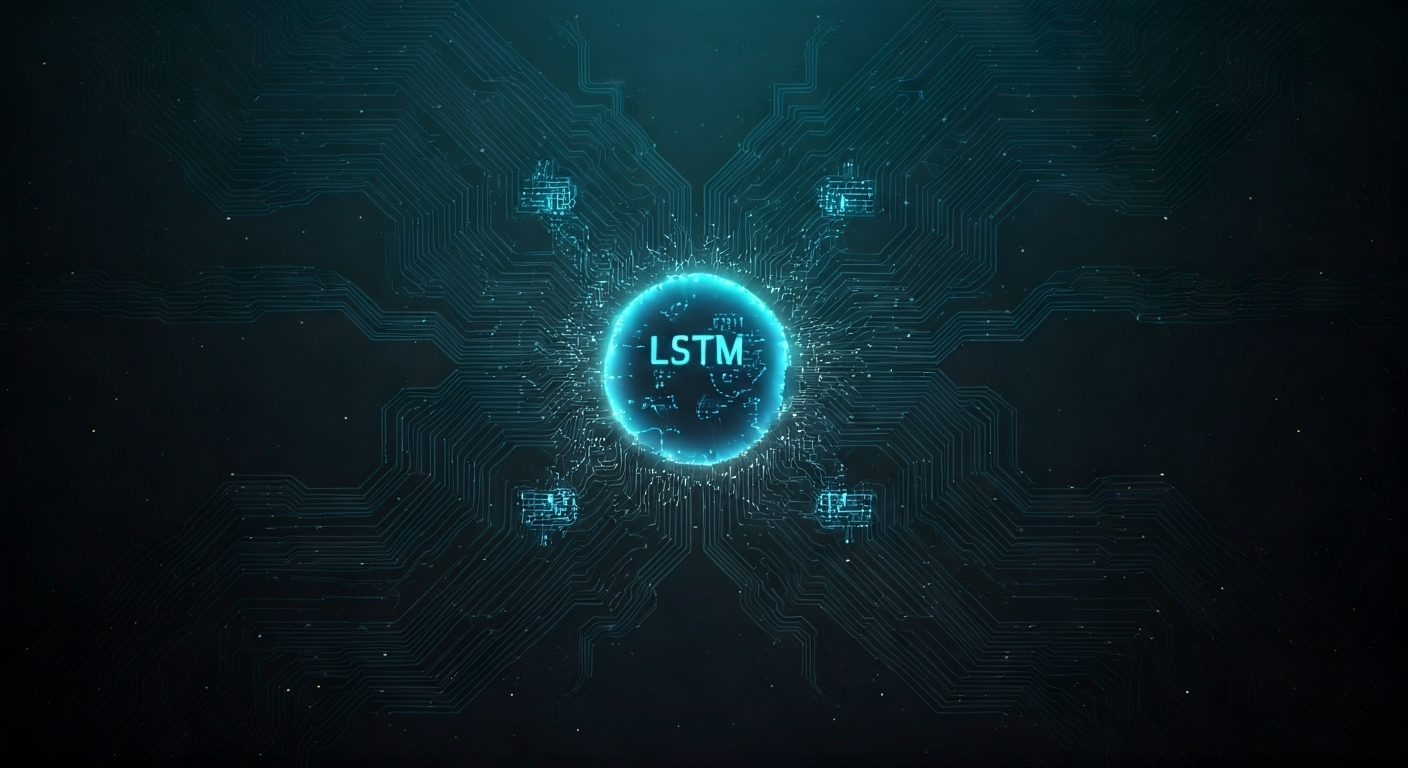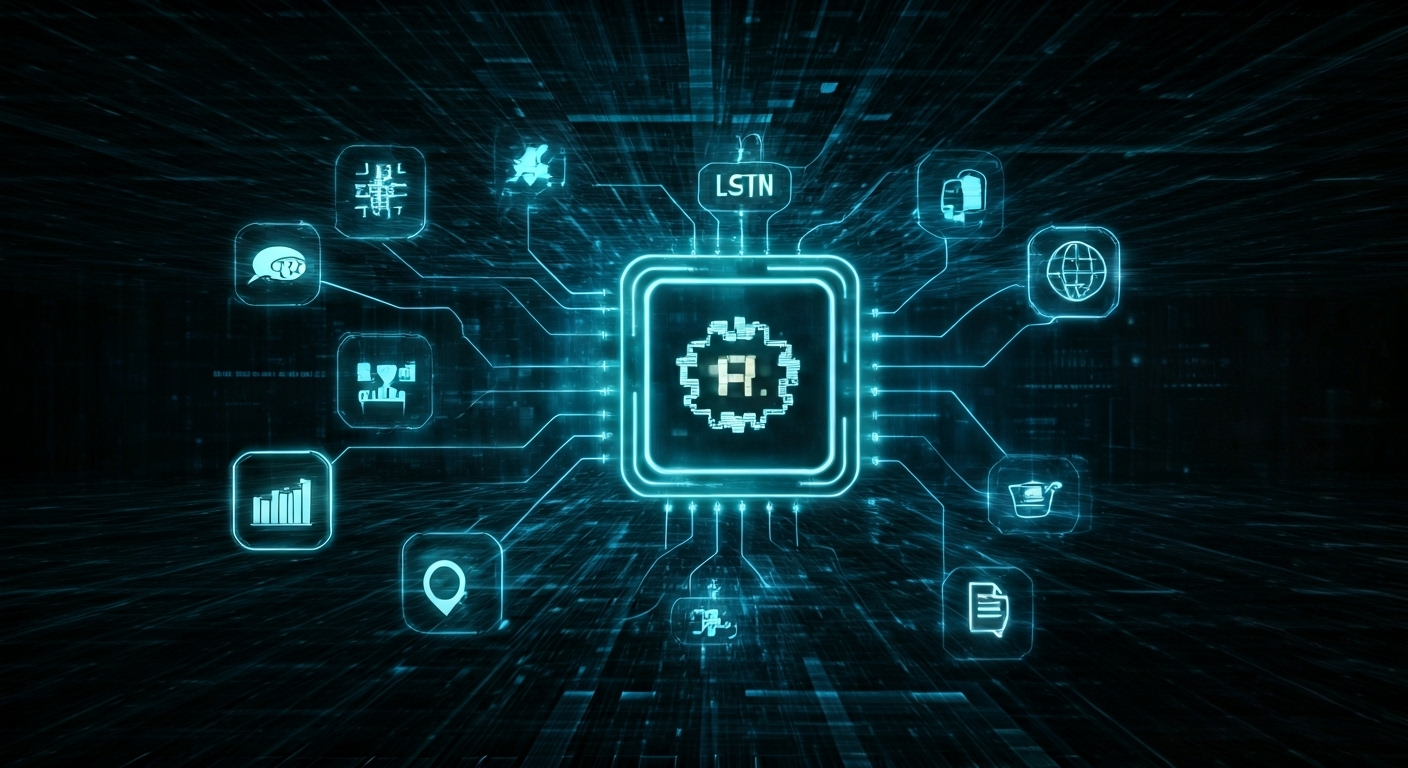LSTM in Deep Learning: Basics and Applications Explained

Key Highlights
-
LSTM networks are a specialised type of recurrent neural network skillfully designed to handle sequential data and long-term dependencies.
-
They effectively overcome the vanishing gradient problem experienced in traditional RNNs, ensuring stable and accurate training processes.
-
The memory cell in LSTM employs the combined action of forget, input, and output gates to regulate information flow efficiently.
-
Their application spans natural language processing, speech recognition, and time series prediction, showcasing versatility.
-
This unique architecture can seamlessly process both short-term and long-term memories, catering to intricate sequence learning.
-
LSTMs play a pivotal role in advancing multiple deep learning tasks across industries.
Introduction
Imagine a network that can remember things from both the recent past and a long time ago. This is the special thing about Long Short-Term Memory (LSTM) in deep learning. Regular recurrent neural networks (RNNs) have trouble with remembering far-away information. LSTMs are made to solve this problem well. Their feedback connections help them work with sequential data, which you need in things like speech recognition and machine translation. In this article, you will find out about the basics, the way they are built, and the different ways you can use LSTMs in today’s deep learning world.
Understanding the Need for LSTM in Deep Learning
 Traditional recurrent neural networks (RNNs) have trouble holding on to information when they deal with sequential data for a long time. The main problem comes from the vanishing gradient problem. In this case, the gradients get smaller and smaller, which makes it hard for the model to learn well.
Traditional recurrent neural networks (RNNs) have trouble holding on to information when they deal with sequential data for a long time. The main problem comes from the vanishing gradient problem. In this case, the gradients get smaller and smaller, which makes it hard for the model to learn well.
This stops RNNs from being good in most deep learning jobs that need the model to remember things over many time steps. LSTM networks solve the vanishing gradient problem in a good way. Because of their special setup, they let the model learn well and make sure it can handle both new and old information in any deep learning situation. This is why lstm networks are so useful when you need to work with sequential data and deal with the vanishing gradient and other gradient problems.
Challenges with Traditional RNNs
Standard recurrent neural networks (RNNs) were once seen as good at working with sequence data. But there were problems that popped up soon after, mainly because of the vanishing gradient. When you use back-propagation for many time steps, the gradients can get so small that the network cannot learn well.
When a task needs the system to remember things from far back, the issue gets even worse. Traditional RNNs forget past inputs and do not give the best results. There is also a problem with how they are made. Standard RNNs cannot tell the difference between information that is important and what is not.
For example, tasks like looking for patterns in time series data or doing speech recognition get tough. That is because the network finds it hard to train and remember all it needs to. These problems made people create better models that solve memory issues and can handle complex connections. This is where LSTMs do better and are very important in deep learning work now.
Importance of Capturing Long-Term Dependencies
Long-term connections are key when working with sequential data. This is because some tasks, like natural language processing or time series work, need the model to remember things over a long time. If a model can not do this, it will only focus on what is happening right now. This can make the predictions bad or not good because the model does not use past details.
When there is no way to keep previous information, the model does not use the right context to make choices. This makes things less correct. For example, in language translation, the start of a sentence gives the right hint for things that come later. But with traditional RNNs, memory often runs out, so early words are lost.
The memory cell inside an LSTM solves these problems. It helps save both short-term and long-term info, which leads to better answers for future data and future time steps. LSTMs have special gates to let data in or out. This helps them fix old problems in sequence learning tasks. Because of these advances, LSTMs are behind many wins in deep learning, like time series and natural language tasks.
Core Architecture of LSTM Networks
The smart setup of LSTM architecture makes it different from other networks. At the heart of this are two big parts. One is the cell state. The other is the types of gates: forget, input, and output. These help control how the data moves inside the network. With these gates, the network can keep what’s important and get rid of information it does not need.
There, the layers build on ideas from recurrent neural networks. But LSTM improves how to handle long runs of data even better. This structure is important when working with things like sequence data. It helps solve tough problems in reading and using that kind of information.
Memory Cell and State Flow
The memory cell is at the center of every LSTM unit. It helps the network deal with sequential data. This cell keeps important information over time. Because of this, it can remember both short-term and long-term things.
The cell state works like a moving belt. It carries important data along without changing it much. The information moves between the hidden state, cell state, and input. This movement helps the network change with the task. This is key in things like speech recognition, where something heard earlier can help figure out what comes next.
The input data connects with both the previous hidden states and the set weights. This lets the system change what it remembers in a smart way. With this design, LSTM shares information in a good way. It also makes learning work well and helps lower problems like the vanishing gradient problem.
The Role of Forget, Input, and Output Gates
The gates in an LSTM have main jobs to control how data moves in the memory cell. The forget gate helps decide what old information should stay. It does this by looking at the current input and the hidden state from the last time step. This helps remove extra or unneeded information.
Then, the input gate checks how important the new data is. It uses an activation function to measure the value of any new details. Unnecessary bits will not be saved in the memory cell.
The output gate picks out information that will go to other parts of the network. It uses the current cell state to figure out what the output should be. This way, it helps use both old and new knowledge from the hidden state to make good predictions. All these gates work together in the lstm architecture. They help manage sequence data and keep track of long-term connections between items.
How LSTMs Work: Step-by-Step Process
Each lstm cell works with sequence data in steps that move through time steps. At first, it gets an input sequence and checks if old memory is still useful. The forget gate helps decide what to throw away from that memory.
After that, the lstm cell looks at the new input with its gates and then updates its cell state. It gives an output at the same time. This step-by-step way of working helps things like machine translation and speech recognition. The flow of data is smartly handled so you get the most out of your system.
Data Flow Through an LSTM Unit
Data flow in an LSTM happens in steps, one after the other. The input values and the previous hidden state go into the forget gate. The forget gate helps to decide what memories the LSTM should keep.
Next, the model checks the new input. This changes the updated cell state because the model adds important information to it. The input gate and the hidden state work together. This way, the memory cell gets good information that can be kept for a long time.
Last, the output layer uses the current cell state and other things it knows to make a guess or prediction. For example, when doing language translation, this way helps the model to understand words by using the bigger meaning from the rest of the sentence.
Gate Activation Functions and Their Impact
Activation functions are what make the LSTM gates work. The sigmoid function is used to turn values between 0 and 1, and this helps the network choose if it should keep or forget some information. You will find this in all three gates of LSTM: forget, input, and output.
The tanh function works a bit differently. It changes the direction and scale of updates, making sure any new information added to the cell state sits between -1 and 1. This helps the lstm layers learn in a more balanced way.
There are also parts like the Hadamard product. This lets the gates work with single parts of data at one time. When all these pieces work together, LSTMs can keep important details for a long time and throw out things that do not matter. This is really good for tasks like speech and text recognition.
Key Variants of LSTM
Over the years, there have been new types of LSTM variants made for different needs. Some, like bidirectional LSTMs, let the model use both past and future steps at the same time. Others add peephole connections, so the gates can work with the cell state in a new way.
These changes help fix problems that the first LSTM systems have with special tasks. Both of these improvements make LSTMs work better for more things, like language translation and machine learning.
Bidirectional LSTM and Its Advantages
Bidirectional LSTM works by looking at input sequences from both the front and the back at the same time. This two-way setup helps it make better predictions with more context, making it great for strong sequence learning.
Here’s how it stands out:
| Feature | Explanation |
|———————————–|————————————————————————————–|
| Forward Pass | Moves through input from the beginning to the end, one step at a time. |
| Backward Pass | Looks at the input in reverse to add more understanding. |
| Applications | Very good for language translation, giving better results at both the sentence and word level. |
This design gives better results for tough language tasks, and helps LSTM work well in today’s AI, especially for things like language translation and sequence learning.
Peephole Connections and Other Improvements
Peephole connections change the way gates talk with the cell state. With these connections, gates can look at long-term memory right when they make a decision. This helps make choices about the last time step more accurate.
For example, gates now check the cell state at that time instead of just focusing on the hidden state from before. New tweaks to how activation functions work let deep learning models learn in a more detailed way. Because of this, artificial neural networks can find answers faster.
These new changes lead to better and more controlled predictions, even when deep learning algorithms are very hard. This makes LSTMs work well in many real-world tasks that use deep learning.
Applications of LSTM in Modern Deep Learning
 The applications of LSTMs go much further than just theory. These models change the way we do many things in machine learning and artificial intelligence. People use them in fields like natural language processing, speech recognition, and time series analysis.
The applications of LSTMs go much further than just theory. These models change the way we do many things in machine learning and artificial intelligence. People use them in fields like natural language processing, speech recognition, and time series analysis.
LSTMs work well with sequential data, and because of this, they help in signal processing and image captioning. They are used in many AI tools, too. LSTMs hold a key place in the world of deep learning, and they are now a must-have part in many artificial intelligence uses.
Natural Language Processing (NLP) Use Cases
Natural language processing offers many useful tools and solutions. In machine translation, it helps to get accurate translations by working with sequential data and using deep learning. Deep learning algorithms let NLP understand the meaning and context of words in any language.
Speech recognition systems also use NLP. They use LSTM networks that are a type of recurrent neural network. These networks look at audio inputs and turn them into text. They are good at handling the vanishing gradient problem, which helps them work better with long pieces of data.
These NLP uses show how it has changed many industries. People now use it to improve the way they talk and work with computers, making things faster and smoother.
Time Series Prediction and Signal Processing
LSTMs are very good when it comes to time series prediction. They look at patterns that show up again and again over a long period of time. You will see them being used in things like:
-
Price forecasting: Try to guess how prices in the market might go up or down.
-
Signal filtering: Take out the random noise from sound or sensor data, and make it easier to use.
-
Weather modeling: Predict how the weather, like changes in temperature, might act with the help of time series data.
By looking into how things might change in the future time, LSTM models give us a helpful tool for AI right now.
Conclusion
To sum up, LSTM networks are a big step forward in deep learning. They solve the problems that traditional RNNs have, because they can keep track of things in data for a long time. Their special setup, which includes memory cells and gates, helps them hold on to information even across long time sequences. This makes them very useful in areas like natural language processing and time series prediction.
As you look into what LSTM networks can do, think about how they might help your own projects or research. If you want to learn more or need help with using LSTM models, you can ask for a free consultation. This is a good way to start your journey toward using deep learning, time series analysis, and natural language tasks for your needs.
Frequently Asked Questions
What makes LSTM different from traditional RNNs?
LSTMs help fix the vanishing gradient problem found in traditional RNNs. Their memory cell can keep both recent and older facts in sequence data. This lets them handle long-term information better than other types.
Can LSTM be combined with other neural network types?
Yes, LSTM networks fit well in hybrid models. These tools add both depth and flexibility. They are good for many deep learning uses. By working together, they help solve problems in machine learning and data science.
What are common challenges in training LSTM networks?
Training LSTMs means you need to pick the right hyperparameters. You also have to stop overfitting and fix problems, like exploding or vanishing gradients. Doing this takes good strategies to make the models strong and work well.
How do LSTMs help prevent the vanishing gradient problem?
By using a cell state, LSTM networks keep information for a long time. This helps in deep learning because it keeps the details from getting lost when you train the model. With this way, the LSTM networks do not let the signals get weaker or fade away over time. This helps the deep learning tasks be more stable.
When should I choose LSTM over GRU or other architectures?
Choose LSTM if you need to work with a lot of sequence data that has different types of links in it. When you only have a small set of data, you can use models like GRUs instead, and they will work well. But LSTMs are good when you have to use them for many other things as well.
https://api.semanticscholar.org/CorpusID:1915014
https://api.semanticscholar.org/CorpusID:11598600
https://arxiv.org/abs/1709.05206
https://doi.org/10.1162%2Fneco.1997.9.8.1735
https://pubmed.ncbi.nlm.nih.gov/9377276
https://api.semanticscholar.org/CorpusID:12284900
https://pubmed.ncbi.nlm.nih.gov/11032042
Discover more from Neural Brain Works - The Tech blog
Subscribe to get the latest posts sent to your email.
